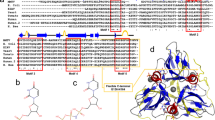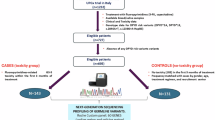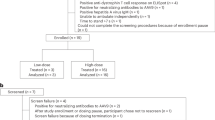Abstract
We have shown that the vestigial (vg) mutant of D. melanogaster has a perturbed nucleotide metabolism compared to various wild-type strains. The mutant is particularly spontaneously resistant to aminopterin. The resistance seems to correlate with an increase in dihydrofolate reductase (DHFR) activity and quantity. The DHRF is a target enzyme of aminopterin. Our results suggest that the vg+ gene could be a regulatory gene acting on the DHFR gene. The wing mutant phenotype being due to a decrease in the thymidylate pool (dTMP) (Silber et al., 1989).
In order to understand better the action of the mutant gene on nucleotide metabolism, we have induced suppressor genes of the mutant phenotype by mutagenesis with ethyl methanesulfonate (EMS) and bromouridine (BUR). The suppressor strains obtained display a phenotype intermediate between wild-type and vg phenotype. The action of three independent suppressor genes on eight parameters of nucleotide metabolism is reported here [three enzyme activities, resistance to aminopterin and to fluorodeoxyuridine (FUdR), auxotrophy test and the ability to use exogenous thymidine and uridine].
In comparison to the original vg strain, major changes for the parameters tested are observed. The most striking effects are obtained with the vgBUR27 strain, which is highly sensitive to aminopterin and to fluorodeoxyuridine and didplas the highest thymidine kinase (TK) and DHFR activities within the strains tested. The potential actions of suppressor genes on the vg mutant are discussed.
Similar content being viewed by others
Article PDF
References
Albertini, R, and De Mars, R. 1970. Diploid azaguanine-resistant mutants of cultured human fibroblasts. Science, 169, 482–485.
Alexandrov, I D, and Alexandrova, M V. 1987. A new nw allele and interallelic complementation at the vg locus of Drosophila melanogaster. Drosophila Inf Ser, 66, 11–12.
Alt, F W, Kellems, R E, and Schimke, R T. 1976. Synthesis and degradation of folate reductase in sensitive and methotrexate resistant lines of S-180 cells. J Biol Chem, 251, 3063–3074.
Bazin, C, and Silber, J. 1982. Genetic studies of phenotypic revertants of the vestigial mutant in Drosophila melanogaster, induced by bromouridine and ethyl methanesulfonate. Mut Res, 105, 65–72.
Falk, D R, and Nash, D. 1974. Sex linked auxotrophic and putative auxotrophic mutants of Drosophila melanogaster. Genetics, 76, 755–766.
Le Menn, A, Bazin, C, and Silber, J. 1987a. Nucleotide metabolism variability in Drosophila melanogaster. Mol Gen Genet, 208, 408–411.
Le Menn, A, Silber, J, and Bazin, C. 1987b. Hypoxanthine guanine phosphoribosyltransferase (HGPRT) activity and resistance to aminopterin in the wild-type and in vestigial mutant of Drosophila melanogaster during development. Biol Cell, 59, 15–20.
Lindsley, D L, and Grell, E M. 1968. Genetic variations of Drosophila melanogaster. Carnegie Institute Washington Publications, 627.
Lowry, O H, Rosebrought, N J, Farr, A L, and Randall, R J. 1951. Protein measurement with the Folin phenol reagent. J Biol Chem, 193, 265.
Robert De Saint Vincent, and Buttin, G. 1973. Studies on 1β-D-arabinofuranosyl-cytosine-resistant mutant of Chinese-hamster fibroblasts. A mitochondrial deoxy-cytidine kinase devoid of activity on arabino-cytosine. Eur J Biochem, 37, 481–488.
Rabinow, L, and Bircher, J. 1990. Interactions of vestigial and scabrous with the Notch locus of Drosophila melanogaster. Genetics, 125, 41–50.
Sang, J H. 1956. The quantitative nutritional requirement of Drosophila melanogaster. Exp Biol, 33, 45–72.
Silber, J, and Becker, J L. 1981. Hypoxanthine guanine phosphoribosyltransferase (HGPRT) in the vestigial mutant of Drosophila melanogaster. Effect of inhibitors of the purine pathway. Genetica, 55, 217–220.
Silber, J A, Coste, C, Bazin, C, and Le Menn, A. 1985. Dihydrofolate reductase activity and resistance to aminopterin in various species of Drosophila. Mol Gen Genet, 200, 92–95.
Silber, J, Bazin, C, and Le Menn, A. 1989. Vestigial mutants of Drosophila live better in the presence of aminopterin. Increased level of dihydrofolate reductase enzyme in the mutant. Mol Gen Genet, 218, 475–480.
Williams, J A, and Bell, J B. 1988. Molecular organization of the vestigial region in Drosophila melanogaster. EMBO J, 7, 1355–1363.
Author information
Authors and Affiliations
Rights and permissions
About this article
Cite this article
Bazin, C., Silber, J. vestigial suppressor genes and resistance to aminopterin in Drosophila melanogaster. Heredity 69, 473–477 (1992). https://doi.org/10.1038/hdy.1992.152
Received:
Issue date:
DOI: https://doi.org/10.1038/hdy.1992.152



